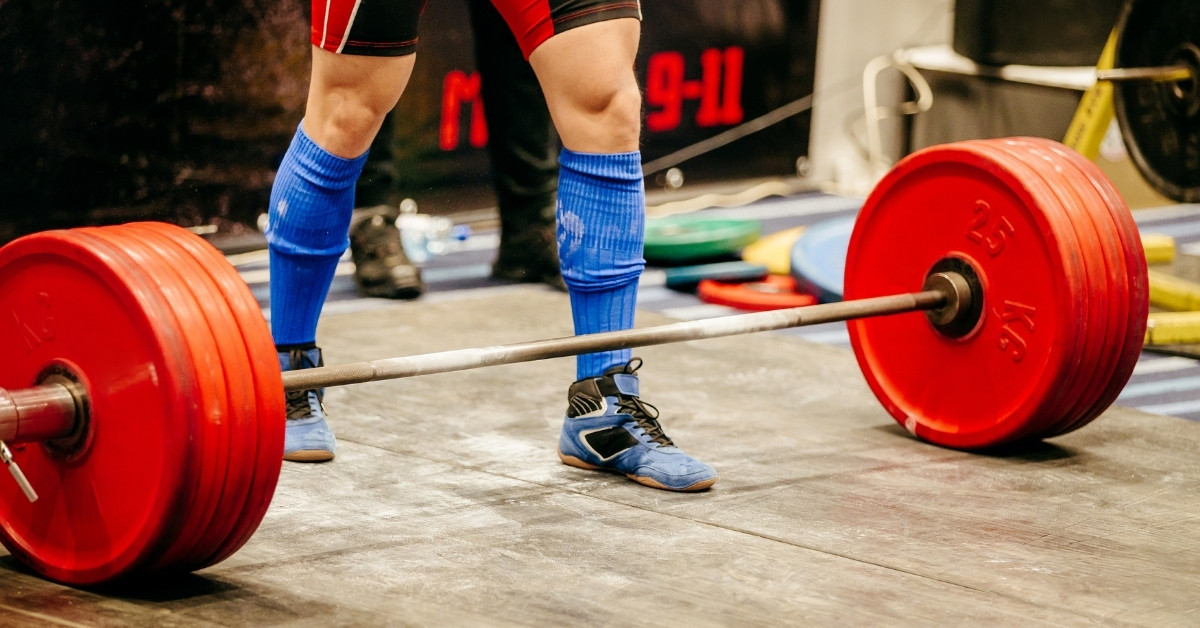Whether you are new to lifting or just trying to consider your options, understanding the difference between Olympic lifting and powerlifting can be essential in your fitness journey. To someone who isn’t as knowledgeable about the different types of lifting, you may notice some subtle differences but don’t realize all of the differences between these options. You can learn more about these two types of lifting to decide which is best for you and some exercises for beginners.
Understanding the Difference Between Olympic Lifting and Powerlifting
In this section, you can look at each of these options, what makes them different, and how to choose the right approach to lifting for your fitness goals.
Powerlifting
The focus of powerlifting is all about brute strength within a single plane of motion. Competitors will lift as heavy as possible using the three core movements: the bench, the deadlift, and the squat. There are usually between 2 and 5 rep ranges per set, with more extended rest periods. There will still be isolation exercises used in a training program for powerlifting, but the primary focus is to lift as much as possible. You don’t need to worry about cardio because all of your strength is required to lift heavier weights. It’s not about being strong; it’s about being very physically strong.
The goal of powerlifting competitions is to lift as much as possible in a single rep on each of their 3 lifts. Each competitor is put into a weight category, and they have a WILKS score calculated, which compares the lifter’s raw strength without considering their weights. The competitors are allowed 3 attempts with each lift and will be judged on the techniques that they use as there are strict requirements that must be met for the lift to be deemed legal.
Some equipment that a powerlifting competitor may use include:
- Singlets
- Lifting shoes
- Belts
- Knee sleeves
- Wrist wraps
In short, if someone wants to live the heaviest weight possible and is not as concerned about the aesthetics, they are likely focused on powerlifting.
Olympic Lifting
Olympic lifting is what you typically think of if you are used to seeing weightlifting competitions in the Olympics. The types of lifts in Olympic lifting are very different than what you would find in powerlifting because they are far more technical. When training for an Olympic lifting competition, training revolves around the primary compound lifts performed during the competitions, which are the “snatch” and the “clean and jerk.” Since there is such a significant emphasis on the technique with this type of lifting, training tends to build up the explosive power in just a single phase of a single lift.
Other workouts may focus on helping the individual build up strength using complementary compound movements such as overhead press, deadlifts, and squats. Every exercise tends to have rep ranges between 2 and 6, with rest periods between 3 and 5 minutes.
Olympic lifting competitors are also placed in weight categories, just as it would happen in powerlifting. They are allowed to have 3 attempts with every lift and will also wear supportive lifting accessories during the competition. The most significant difference between this and powerlifting is the type of lifts that the competitor will perform. Strength limits are tested in both of these competitions. Still, Olympic lifting does require the competitor to have more flexibility, mobility, and explosive power in the entire body during the execution of the lifts.
Olympic Lifting Beginner’s Exercise Guide
With Olympic lifting, you need to learn how to do the snatch and the clean and jerk. This means that you need to spend a lot of time during your beginner exercises practicing these lifts and doing any accessory exercises that can have a positive impact on your strength and technique. Here are some workouts that can help improve your snatch and clean and jerk techniques.
Snatch Workout
- Snatch: 6 sets of 3 reps for 2-3 minutes
- Snatch Grip Deadlifts: 4 sets of 6-8 reps for 90-120 seconds
- Overhead Squats: 3 sets of 8-10 reps for 60-90 seconds
- Pendlay Row – Wide Grip: 3 sets of 8-10 reps for 60-90 seconds
- Barbell Shrugs: 3 sets of 10-12 reps for 60 seconds
- Standing Calf Raises: 3 sets of 10-12 reps for 60 seconds
- Dumbbell Side Bends: 3 sets of 12-15 reps per side for 60 seconds
Clean and Jerk Workout
- Clean and Jerk: 6 sets of 3 reps for 2-3 minutes
- Front Squats: 4 sets of 6-8 reps for 90-120 seconds
- Barbell Overhead Press: 3 sets of 8-10 reps for 60-90 seconds
- Pull-Ups: 3 sets of as many reps as possible in between 60-90 seconds
- Barbell Lunges: 3 sets of 10-12 reps per leg for 60 seconds
- Seated Calf Raises: 3 sets of 10-12 reps for 60 seconds
- 45-Degree Back Extensions: 3 sets of 12-15 reps for 60 seconds
Powerlifting Beginner’s Exercise Guide
When you start the process, you will begin by establishing your benchmarks in the squat and the bench. The deadlift starting point does extend from the squat benchmark. You can expect these numbers won’t be impressive when you’re just starting. By sticking to a routine, you can get these numbers to a better point.
Once you establish your benchmarks, your training sessions will generally look like this:
- Squat and deadlift 10 lbs. every day when starting, then increase by 5 lbs. It starts to feel challenging to you.
- Do bench presses and overhead presses every day, starting with 5 lbs. Then slowly increase the weights once it feels more challenging.
You will start with 8 reps per set, which helps you practice movements and build up your baseline. You should take between 3 and 5 minutes in between the sets.
Conclusion
Powerlifting and Olympic lifting are great ways to gain all of the benefits of weightlifting, even if you’re not serious about competing. Knowing the difference between these options can help you decide which approach you want to go with. If you are looking to maximize your lifting potential, build muscle, and increase strength, contact EVOLVE patient care today. Our team of hormone optimization specialists can help determine if you have a testosterone imbalance that could be affecting your athletic abilities.







